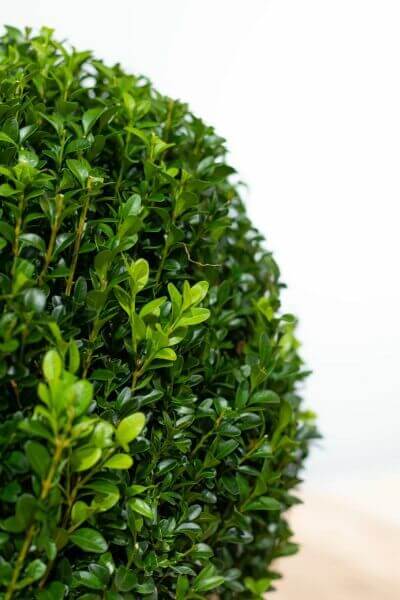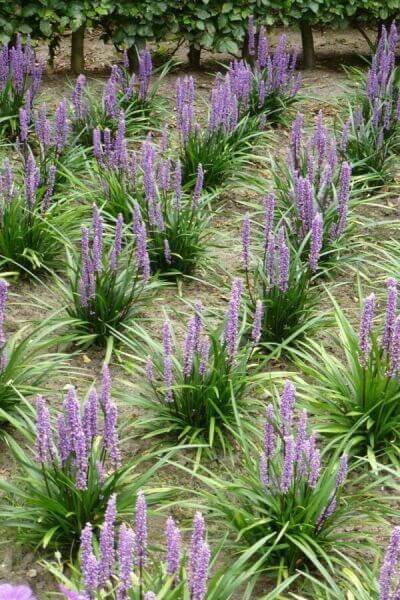Low-growing Hedging Plants For Borders
Improve your garden's appeal with lush hedge ranges such as Yew (Taxus), Thuja, Laurel, Photinia, and Bamboo, commemorated for their structural stability and environmental advantages.
Yew and Thuja offer evergreen coverage and winter strength, while Laurel provides quick growth and broad, fragrant leaves.
Photinia includes seasonal appeal with its lively red foliage, and Bamboo lends a low-maintenance, peaceful atmosphere.
These hedges improve air quality, reduce noise, and develop tranquil, private spaces.
Appropriate planting, spacing, and upkeep guarantee energetic growth and environmental consistency.
Check out how these lush ranges can elevate your garden's charm and wellness.
Key Takeaways
Change Your Garden With Lush Hedge Ranges
- Select Yew for its dense, evergreen growth and exceptional durability.
- Opt for Laurel for its fast growth and broad leaves, guaranteeing fast personal privacy.
- Select Photinia for its dynamic seasonal foliage, which turns a striking dark red.
- Make use of Bamboo for a low-maintenance, winter-hardy hedge with visual appeal.
- Area plants 2-3 per meter and prune regularly for optimal growth and health.
Popular Hedge Plants
When transforming a garden with lush hedge varieties, it's necessary to think about popular hedge plants such as Yew, Thuja, Laurel, and Photinia due to their unique qualities and benefits.
Yew (Taxus) is extremely esteemed for its longevity and dense, green development, making it a prime choice for sustaining landscapes.
Thuja is noted for its evergreen foliage and robust winter resilience.
Photinia adds seasonal vibrancy with red leaves that darken over time, producing vibrant visual appeal.
Laurel uses quick development and fragrant, broad leaves, perfect for fast personal privacy.
In Addition, Bamboo is an exceptional option for atmosphere, providing a low-maintenance, winter-hardy choice that enhances the garden's aesthetic with its elegant, swaying walking canes.
These selections cater to a variety of horticultural requirements and choices.
Benefits of Garden Hedges
Garden hedges offer a wide variety of advantages, making them an important addition to any landscape. These natural barriers are cost-effective to carry out and provide considerable wind security, boosting air blood circulation and contributing to noise decrease. The dense foliage of hedges like Thuja and Beech makes sure personal privacy by obstructing visibility, producing a peaceful and remote environment.
Hedges likewise play a crucial function in microclimate regulation, supplying a stable environment that cultivates plant development and minimizes temperature level fluctuations. Their complex leaf structures filter pollutants, improving air quality and adding to a healthier garden community.
Moreover, hedges excel in sound decrease, taking in and deflecting acoustic waves to lower ambient sound levels. This dual functionality of supplying both visual and acoustic personal privacy boosts the overall serenity and visual appeal of any garden.
Planting and Upkeep Tips
For an effective hedge, meticulous preparation of the planting area is crucial. Guarantee the soil has correct pH and drainage to support strong root development.
Area the plants properly for the picked types. Water the hedge regularly during its initial growth phase, adjusting as required with seasonal modifications.
Carry out a systematic bug control and disease prevention technique, using natural or chemical treatments when needed. Regularly inspect for aphids, mites, and fungal infections.
Apply mulch to keep moisture and suppress weeds. Seasonal pruning promotes dense development and air circulation, essential for plant health.
Following these standards will assist you cultivate a dynamic, properly maintained hedge that boosts the charm of your garden.
Spacing and Trimming Guidelines
Spacing and Cutting Standards
Appropriate spacing and trimming are crucial for cultivating healthy, aesthetically appealing hedges. Appropriate spacing guarantees each plant receives sufficient nutrients, light, and air flow.
Follow these standards for ideal hedge maintenance:
- Spacing: Position hedge plants 2-3 plants per meter to motivate robust growth.
- Pruning Techniques: Routine pruning is vital for maintaining wanted hedge height and shape. Cut new development in summertime and cut down older wood throughout winter.
- Seasonal Care: Change cutting methods and schedules according to seasonal requirements to guarantee plant health.
- Hedge Height: Regularly display and trim to keep the preferred hedge height and attain uniform aesthetics.
Adhering to these actions will guarantee your hedge flourishes, improving both the appeal and functionality of your garden.
Selecting the Right Hedge
Choosing the Right Hedge
Picking the proper hedge includes examining aspects such as fully grown height, foliage density, and ecological durability. Successful hedge plant selection requires understanding each species' growth qualities and site-specific versatility.
For example, Yew (Taxus) offers excellent longevity and thick development, while Thuja is notable for its winter season strength. Furthermore, thinking about maintenance requirements is crucial; fast-growing types like Laurel or Privet demand routine cutting, whereas low-maintenance choices like Bamboo or Ivy might be preferable for those looking for minimal maintenance.
Environmental elements such as soil type, light availability, and wetness conditions should likewise guide the selection procedure. This careful technique ensures the selected hedges will thrive, offering both functional and aesthetic advantages to the garden landscape.
Delivery and Planting Recommendations
To guarantee your hedge plants prosper, they should be delivered by specialized carriers and planted promptly upon arrival.
Follow these vital steps for successful planting:
- Soil Preparation: Enhance the soil with natural matter to improve drainage and nutrient material.
- Planting Depth: Develop a trench two times the width and equal to the depth of the root ball.
- Watering Strategies: Water completely after planting, keeping the soil consistently damp however not filled.
- Mulching: Use a layer of mulch to retain moisture and suppress weeds.
Client Assistance and Service
Offered the crucial role of timely support in horticultural pursuits, our client assistance group is readily available 6 days a week through telephone, email, and social media to offer professional recommendations and quickly attend to any issues. Their devotion to fast action times makes sure consumer satisfaction by resolving queries related to plant health, optimal planting methods, and maintenance schedules.

Availability
-------------------
Telephone
This comprehensive support group, strengthened by an excellent 9.3/ 10 consumer rating, highlights our commitment to enhancing the gardening experience for each client.
Often Asked Concerns
The Length Of Time Does It Consider Hedge Plants to Develop?
Hedge plants usually need one to 3 years to end up being totally developed, with the specific period differing by types and growing conditions.
Efficient care throughout this important duration is necessary for robust development. Constant watering, alert weed control, and proper fertilizer application are pivotal in promoting strong root development.
For instance, fast-growing types like Laurel might develop more rapidly, while slower-growing varieties such as Yew might take longer. Diligent maintenance speeds up the facility procedure, resulting in dense and healthy hedges.
What Are the Finest Hedge Plants for Personal Privacy?
The concern of the best hedge plants for privacy includes examining evergreen and deciduous choices.
Evergreen hedges like Thuja, Laurel, and Cypress offer year-round coverage, making sure constant privacy.
In contrast, deciduous hedges such as Beech use seasonal personal privacy, shedding leaves in colder months.
Secret upkeep suggestions for privacy hedges consist of regular trimming, fertilizing in spring, and correct spacing-- generally 2 to 3 plants per meter.
Additionally, constant watering and thorough weed removal are vital for promoting healthy, thick development.
Can Hedge Plants Draw In Wildlife to My Garden?
Yes, hedge plants can bring in wildlife here to your garden by offering essential advantages like shelter, food, and nesting sites, thereby improving local biodiversity. For circumstances, yew, holly, and laurel are outstanding for bring in birds, while ivy supports a variety of pests.
However, it is very important to note that there are some downsides, such as increased maintenance to handle pests and regular maintenance. Carefully choosing and maintaining hedge varieties can assist balance these drawbacks and advantages, eventually cultivating a vibrant and sustainable environment in your garden.
Are There Any Blooming Hedge Plants Available?
Yes, there are flowering hedge plants readily available that can enhance the charm of your garden.
For instance, Elaeagnus, also referred to as Olive Willow, produces aromatic white flowers in the fall, including a touch of elegance.
Photinia, another popular choice, showcases lively red leaves that mature into an abundant green, creating a vibrant visual result throughout the seasons.
To ensure these plants flourish, it's necessary to practice proper pruning methods and seasonal upkeep, such as cutting new growth in the summertime and cutting down in the winter season.
These procedures will help maintain the health and aesthetic appeal of your flowering hedges.
How Do I Prevent Insects in My Hedge Plants?
To avoid insects in hedge plants, utilize natural bug control approaches and keep correct hedge care. Present beneficial insects like ladybugs, which prey on hazardous insects, to produce a balanced community.
Routinely examine your hedges for signs of invasion and immediately get rid of any afflicted parts to avoid the spread. Guarantee the health of your hedges by using balanced fertilizers and providing adequate water.
Utilize mulching to keep soil wetness and correct spacing to lower plant stress and promote robust growth. These practices collectively help in lessening bug concerns and keeping a healthy hedge.
Conclusion
In essence, choosing the right hedge varieties such as Yew, Thuja, and Laurel can change any garden into a tranquil sanctuary. These plants provide year-round greenery, enhance visual appeal, and deal useful advantages like noise reduction and wind protection.
Proper planting techniques, precise spacing, constant watering, and seasonal trimming are important for ideal growth.
Reputable delivery services and expert consumer assistance guarantee a seamless experience from purchase to planting, making it easier than ever to raise your outdoor area.
Garden hedges use a wide variety of benefits, making them a valuable addition to any landscape. These natural barriers are cost-efficient to execute and provide substantial wind security, enhancing air blood circulation and contributing to sound reduction. The thick foliage of hedges like Thuja and Beech ensures personal privacy by obstructing presence, producing a secluded and tranquil environment.

Pruning Techniques: Regular pruning is important for maintaining desired hedge height and shape. Trim brand-new development in summer season and cut back older wood throughout winter.